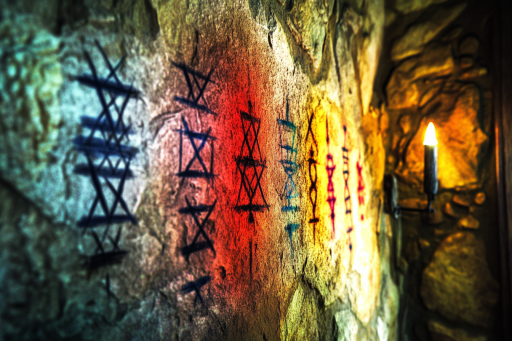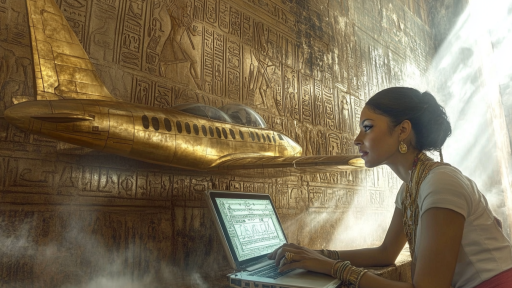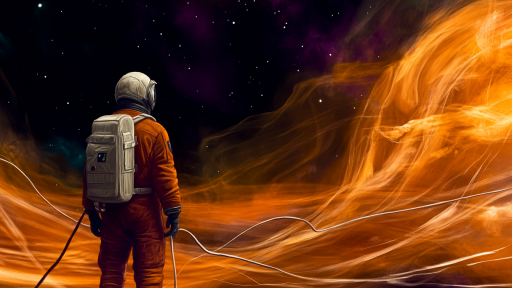
Across history and across cultures, certain symbols appear again and again, woven into myths, carved into ancient ruins, and even appearing in modern-day mysteries. Were these patterns a coincidence, or do they carry a deeper, hidden meaning? Some symbols have clear historical significance, while others seem to defy explanation, connecting civilizations that should have never crossed paths. From cryptic carvings to eerie emblems, these mysterious symbols continue to intrigue, leaving behind more questions than answers.
The Eye of Providence

A single eye, gazing from within a triangle, appears on everything from ancient art to modern currency. Often linked to divine power, secret societies, and hidden knowledge, this symbol has sparked countless conspiracy theories. While some see it as the all-seeing eye of a higher being, others believe it represents control, surveillance, and unseen forces pulling the strings. Where did it truly originate, and what does it reveal about those who use it?
The Ouroboros

A serpent or dragon devouring its own tail, the Ouroboros is a symbol of eternity, cycles, and self-destruction. Found in Egyptian, Greek, Norse, and even Aztec mythology, it suggests an ancient understanding of renewal and infinite loops. Some believe it represents the universe itself, constantly dying and being reborn. Why did so many distant cultures share this same eerie depiction of an eternal cycle?
The Flower of Life

Geometric and mesmerizing, the Flower of Life is a pattern of overlapping circles found in ancient temples, medieval manuscripts, and even modern energy healing practices. It is said to contain the blueprint of the universe, holding mathematical and spiritual secrets within its perfect symmetry. Some claim it reveals the hidden structure of reality itself, while skeptics see only an elaborate design. Could this sacred geometry be more than just a beautiful pattern?
The Spiral

circles, the spiral appears in cultures worldwide. Some say it represents the journey of life, the cycle of the cosmos, or even portals to other realms. Found in everything from ancient petroglyphs to modern scientific equations, the spiral may hold a hidden universal language. What is it about this simple shape that has fascinated humanity for thousands of years?
The Hand of Mysteries
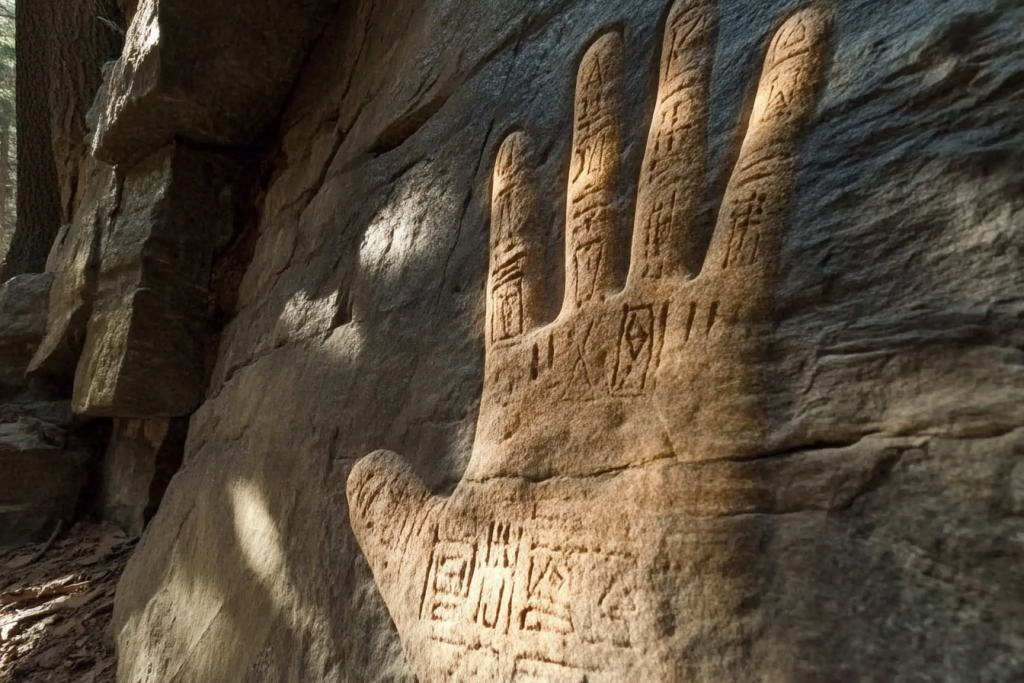
A hand bearing cryptic symbols—a key, a star, a crown, and an eye—has appeared in ancient alchemical texts, secret society insignias, and occult writings. Said to hold the keys to hidden knowledge, this mysterious emblem is linked to those seeking enlightenment or forbidden power. Some believe it represents the path to ultimate wisdom, while others fear its connection to shadowy organizations. What secrets does the Hand of Mysteries truly unlock?
The Double-Headed Eagle

A creature with two heads facing opposite directions has been a powerful symbol across empires, from Byzantium to the Freemasons. Some say it represents duality—past and future, East and West, spiritual and earthly power. Others believe it marks those with secret knowledge, those who can see what others cannot. Is the double-headed eagle merely a royal emblem, or does it hold a deeper, hidden meaning?
The Black Sun

A cryptic and controversial symbol, the Black Sun is said to represent hidden power, occult energy, and lost ancient knowledge. Found in secret societies, ancient European ruins, and even Nazi esotericism, its true meaning remains elusive. Some believe it is tied to forgotten civilizations or an unknown cosmic force, while others fear its dark associations. What lies behind the shadowy glow of the Black Sun?
The Triskelion

A swirling three-legged design, the triskelion appears in Celtic, Greek, and even Asian cultures, often linked to movement, progress, and the cycles of time. Some interpret it as a symbol of mind, body, and spirit, while others believe it carries hidden messages of power. Its presence in unrelated cultures has fueled speculation about lost ancient connections. Did the triskelion originate in one place, or is it a symbol that transcends time and borders?
The Seal of Solomon

A six-pointed star made of interlocking triangles, the Seal of Solomon has been tied to wisdom, magic, and divine protection. Legend says King Solomon used it to control spirits and command supernatural forces. Appearing in religious texts, alchemical manuscripts, and even modern mysticism, its purpose remains debated. Is this symbol a source of ancient power, or simply a misunderstood relic of the past?
The Labyrinth
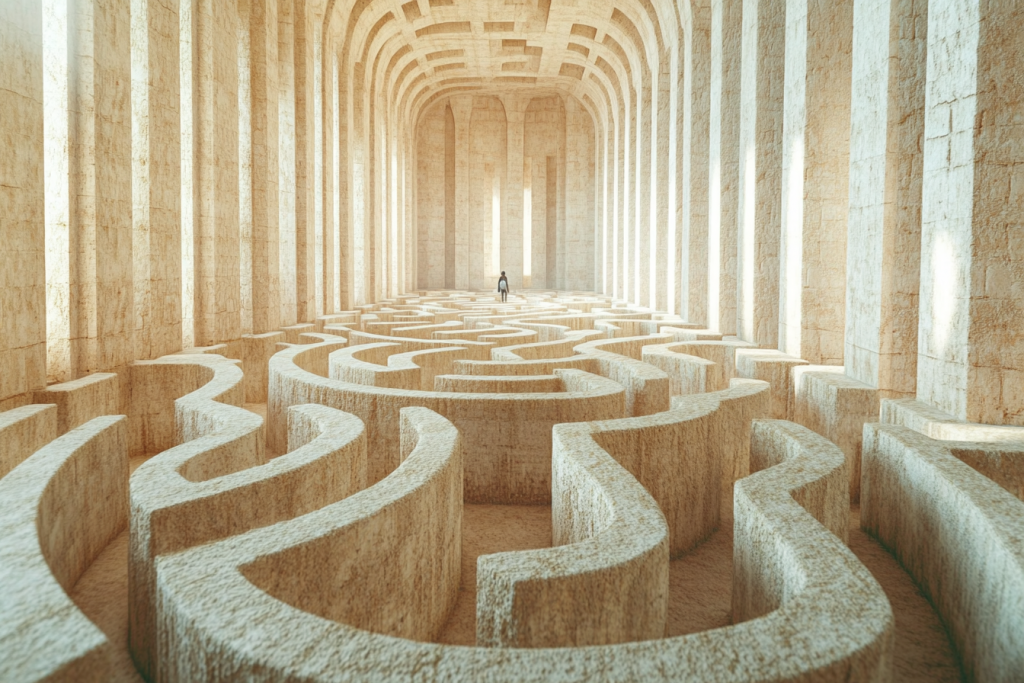
More than just a maze, the labyrinth has appeared in myths, sacred sites, and even medieval churches. Some say it represents the journey of the soul, a test of wisdom, or even a hidden path to enlightenment. Found in Greek legends, Native American petroglyphs, and Hindu temples, its presence is strangely universal. Could the labyrinth be more than just a symbol, but a map to something greater?
The Phoenix

A fiery bird rising from its own ashes, the Phoenix is a symbol of death and rebirth that spans Egyptian, Greek, Chinese, and indigenous cultures. Some see it as an allegory for resilience, while others believe it holds a more mystical significance. Could it represent an ancient truth about renewal, lost civilizations, or even something beyond human understanding?
The Infinity Knot
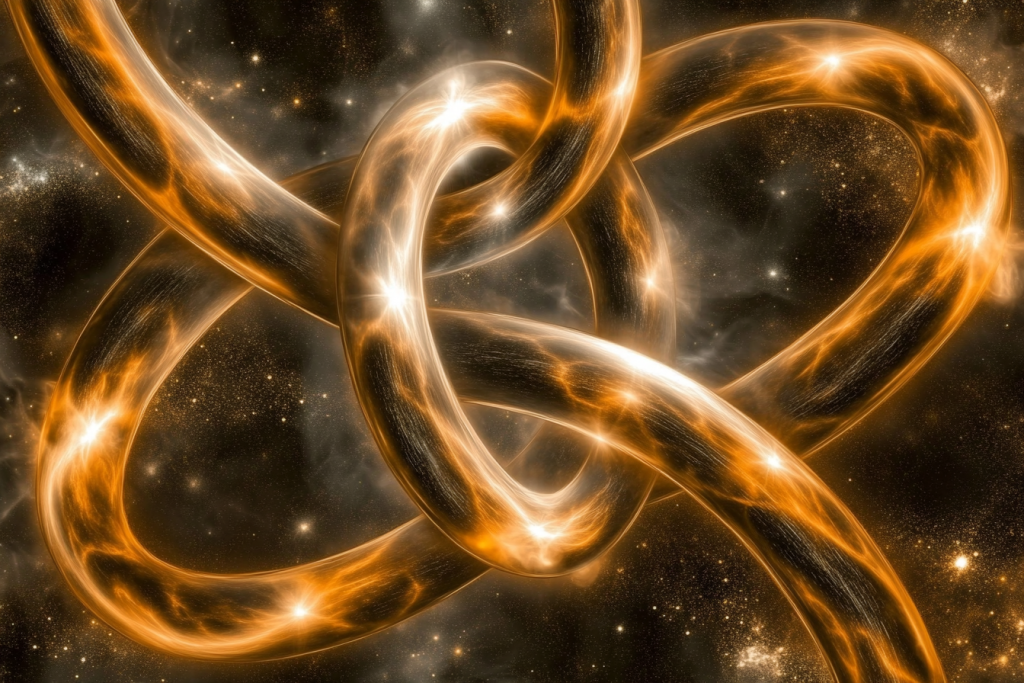
Endless and unbroken, the infinity knot appears in Buddhist, Norse, and Celtic traditions, symbolizing eternity, connection, and the interwoven nature of all things. Some believe it represents the universe itself, looping endlessly without beginning or end. Why has this complex yet simple design resonated with so many civilizations throughout history?
The Crossroads

In folklore and legend, the crossroads is more than just a meeting of paths—it is a place of decisions, supernatural encounters, and hidden bargains. From voodoo rituals to European mythology, stories of strange happenings at crossroads persist. Some believe they are portals, points where realities touch, or places where fate itself can be rewritten. What power do crossroads truly hold, and why do they appear in so many myths?
The Hamsa Hand

An open palm with an eye in the center, the Hamsa Hand is believed to offer protection from evil forces. Found in Middle Eastern, Jewish, and North African traditions, it is said to ward off the “evil eye” and bring good fortune. But some see it as more than a simple talisman—could it be a remnant of an older, hidden belief system?
The Winged Sun

A radiant sun flanked by outstretched wings, the Winged Sun appears in Egyptian, Mesopotamian, and Persian iconography, often symbolizing divinity, enlightenment, and protection. Some believe it represents celestial power, while others see it as a forgotten key to ancient cosmic knowledge. Its presence across distant civilizations raises questions—was it merely an artistic motif, or did it signify a deeper connection to the skies? Could it be a symbol of something humanity once understood but has since lost?
Symbols: A Hidden Language Waiting to be Deciphered

Throughout history, these mysterious symbols have appeared again and again, hinting at connections between civilizations, hidden knowledge, and forces beyond our understanding. Are they simply recurring artistic patterns, or do they hold messages we have yet to decode? Some believe they are remnants of lost wisdom, others see them as coincidences—but one thing is certain: these symbols are not easily forgotten. Could they be trying to tell us something we have yet to realize?

